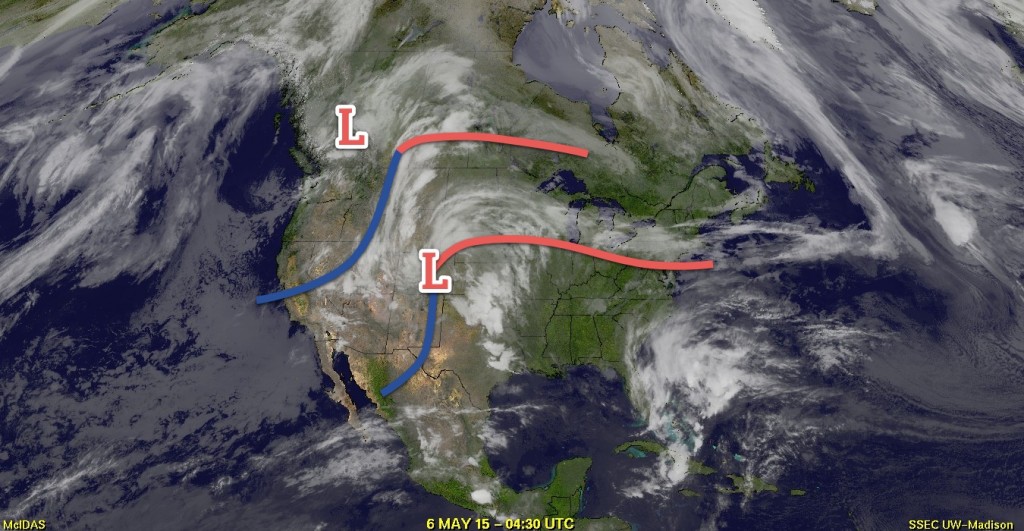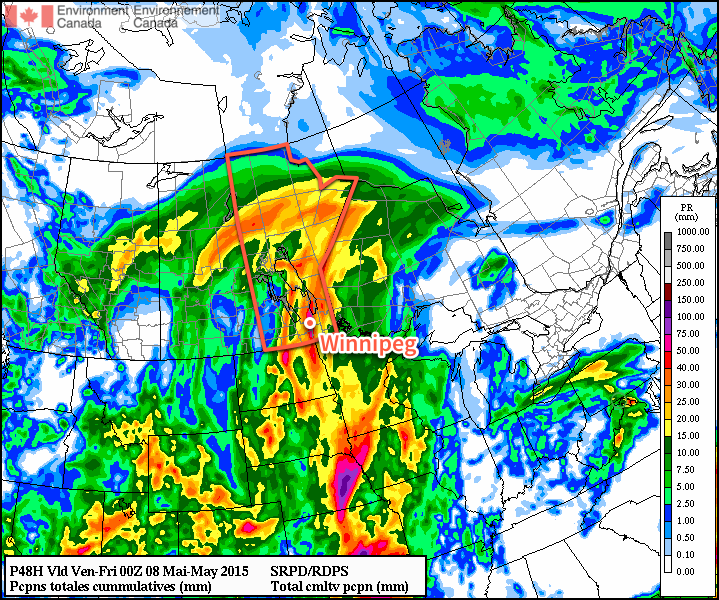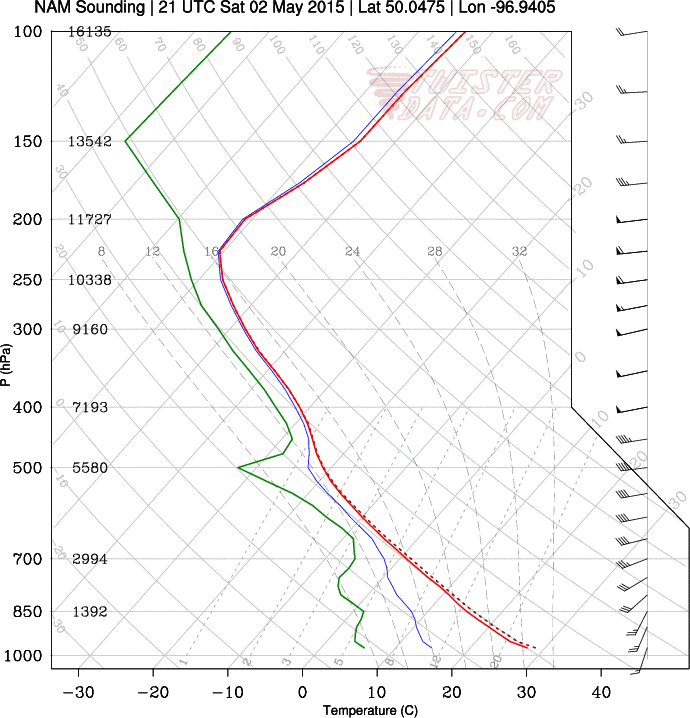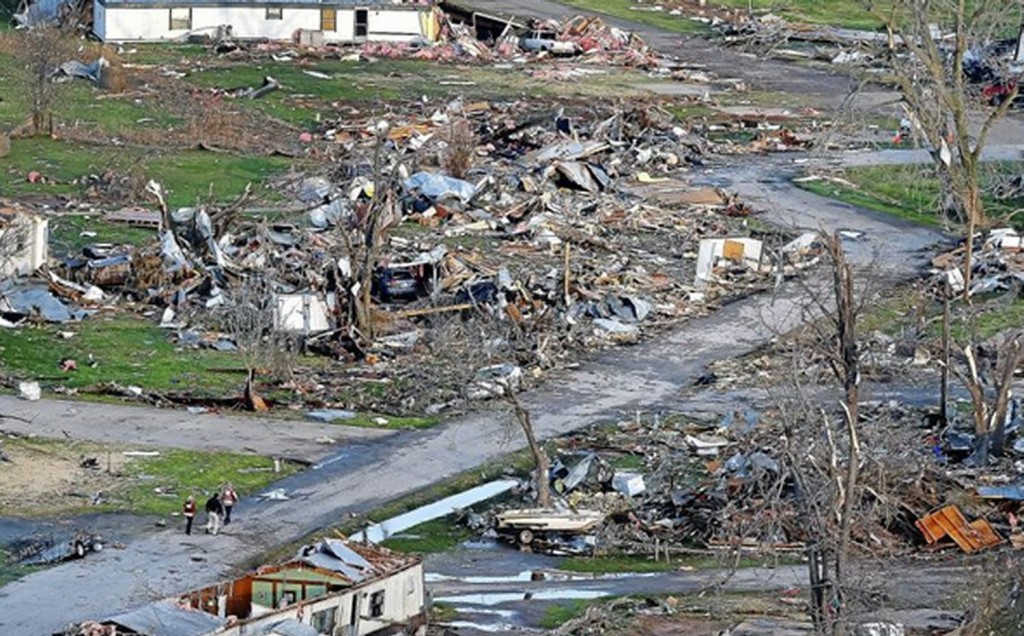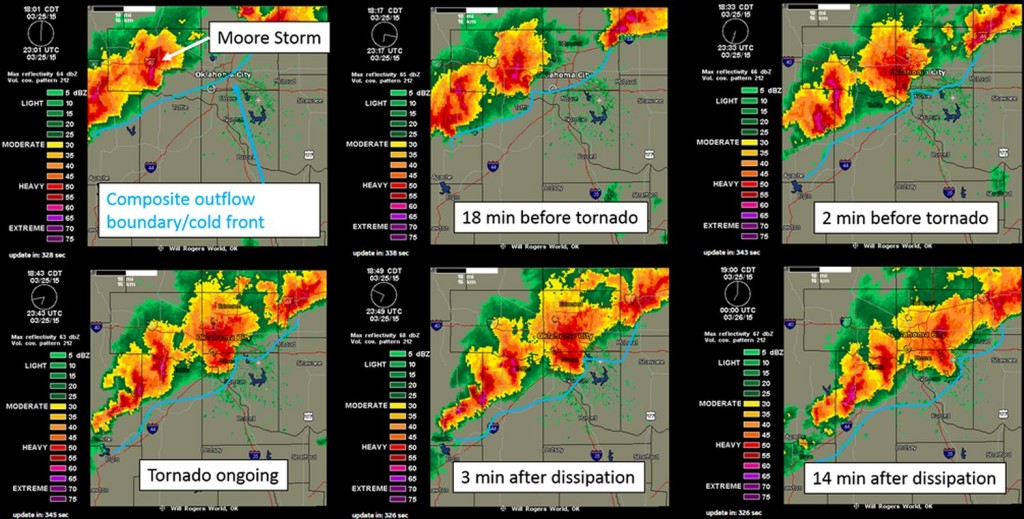More wet weather is on the way to Winnipeg & the Red River Valley as a slow-moving upper-level disturbance bears down on Southern Manitoba. The bulk of the rainfall associated with this next system will be quite a bit more concentrated than last week’s Colorado Low with much of the precipitation being produced by a single, relatively narrow band of moderate rainfall sliding across the region.
Winnipeg will see a high of around 12°C today with cloudy skies through the day. Shower activity will push northwards through the Red River Valley over the morning hours bringing a decent chance of some rain to Winnipeg by mid-to-late afternoon. Winds will be breezy out of the southeast at around 30km/h with a bit of gustiness on top.
Clouds will stick around tonight as the temperature drops to around 7°C with a continued slight chance of showers through much of the overnight period. The next disturbance will move into Southern Manitoba late overnight, spreading rain from SW to NE starting near the Pilot Mound/SW RRV region and lifting towards Winnipeg.
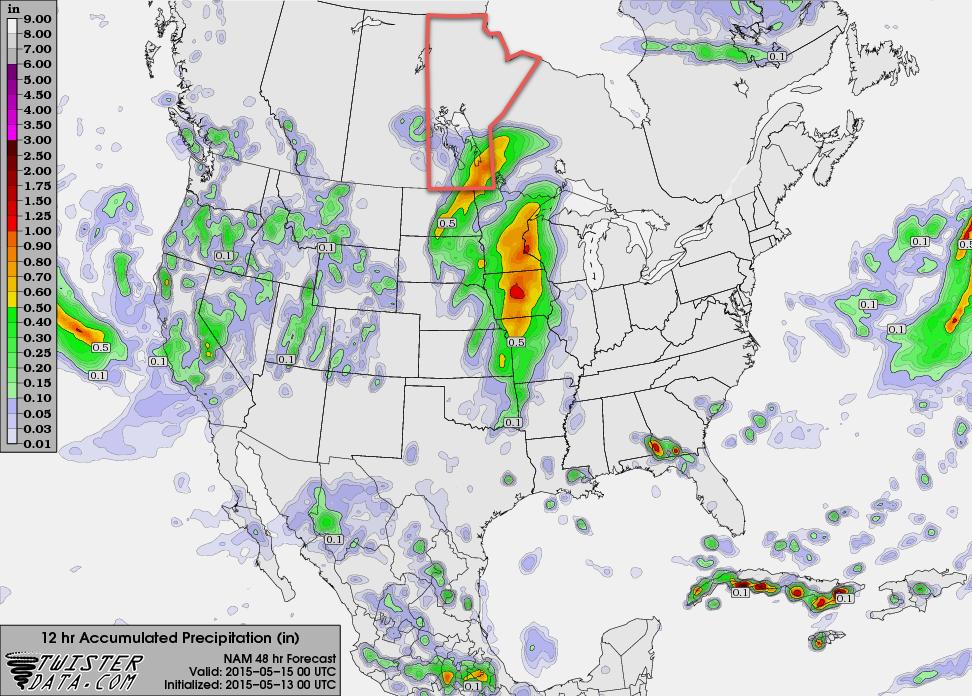
Thursday will start off as a fairly rainy morning, then see rain taper off from west to east through the afternoon. Skies will remain cloudy through the day with winds out of the east. Expect a high near 13°C. The low on Thursday night will be around 7°C under mainly cloudy skies.
When all is said and done, it’s possible we’ll see somewhere from 10–20mm of fresh rain, however this entire system may end up shifting slightly further west which would leave the Red River Valley fairly dry until remnant showers pass through on Thursday night. We’ll be sure to keep tabs on things as they develop through the day and update with the most likely outcome later tonight.
Friday will bring a break from the gloomy weather as things clear out through the morning, leaving us with sunshine and a high near 19°C and light winds.
Long Range
This weekend will bring another disturbance through the region that has the potential to produce a significant amount of rainfall – 25–50mm – however there’s still a lot of uncertainty associated with the system and many divergent model solutions at the moment. It will likely be a generally unsettled week at best, and potentially a downright rainy one at worst. Some forecasts are showing some fairly favourable convective parameters on Saturday that would hint towards the first significant thunderstorm day of the year, but a decent capping inversion looks to keep things at bay as long as the current forecasts hold out.
